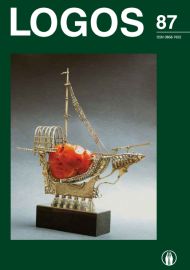Lietuvių Ir Prūsų Religiniai Draudimai
Religious Bans of the Lithuanians and Prussians
Author(s): Rimantas Balsys Subject(s): Customs / Folklore, Social Philosophy, Social history, Philosophy of Religion, Sociology of Religion
Published by: Visuomeninė organizacija »LOGOS«
Keywords: paganism; religious bans; gods; sacred places; rituals;
Summary/Abstract: The article discusses the religions bans on Lithuanians and Prussians recorded in written sources (mainly the 11th to 17th century) and also the reflections of these restrictions in the customs, beliefs and folklore of the 19th and 20th centuries. The Lithuanian and Prussian religious bans can be categorized in at least three different groups: a) fully functioning bans (until Christianization and at least two centuries after Christianization); b) fading bans (from the latter half of the 16th to the first half of the 17th century); c) bans undergoing extinction, becoming a part of customs, belief or superstition. Two different sorts of Lithuanian and Prussian religious bans are distinguished according to their nature: a) bans on contact with objects, sites, people, etc., in the attempt to protect the individual from harmful effects (punishments, illnesses, misfortune, death); and b) bans to protect a sacred site, object, person, etc., so that it would not lose its sacredness. It can be stated hypothetically that sacred sites arose from bans on profane activities in specific locations and that bans on profane activities at a proscribed time gave rise to holy days. This sort of tradition survives in calendrical holidays of the traditional period, in holidays marking the beginning and end of work, and in individual and family holidays.
Journal: LOGOS - A Journal of Religion, Philosophy, Comparative Cultural Studies and Art
- Issue Year: 2016
- Issue No: 87
- Page Range: 135-147
- Page Count: 13
- Language: Lithuanian

